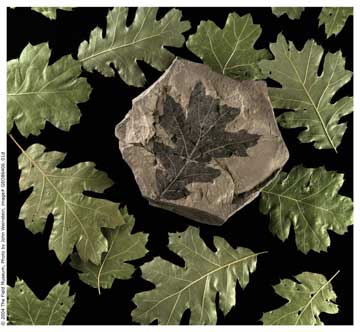Holy Grail of geology found: Measuring elevation over geological eras
New method to measure ancient land elevation developed
November 29, 2004
Monday
Field Museum scientist has developed a novel way to determine land elevation as continents moved around the Earth through geological ages. Knowing how high mountains and plateaus were in the past will help scientists to study how our climate system evolved. "Understanding the past elevation of land surfaces, also known as paleoelevation, has been one of geology's Holy Grails," said Jennifer McElwain, PhD, Associate Curator of Paleobotany at Chicago's Field Museum and sole author of the research to be published in Geology's December issue. "This is the first paleobotanical method that works globally and is independent of long-term climate change.
"The new method will help us to understand the rate at which some of the Earth's most important mountains have uplifted," she added. "It will also show how the process of mountain building influenced climatic patterns as well as plant and animal evolution."
The new method of paleoelevation involves counting the stomata on leaves of plants going back as far as 65 million years ago. Stomata are minute openings on the surface of leaves through which plants absorb gases, including carbon dioxide, which plants need for photosynthesis. Anyone who has climbed a mountain knows that the air gets "thinner" as you climb higher. As with oxygen, carbon dioxide is less concentrated at higher elevations. Therefore, the higher the elevation, the more stomata per square inch of leaf surface a plant would need to survive. By simply counting the number of fossil stomata, Dr. McElwain can estimate how much carbon dioxide was in the air when the fossil leaf developed. From that, she can estimate the elevation at which the fossil plant once lived...cont'd
http://www.sitnews.us/1104news/112904/112904_geology.htmlOld and new leaves
A 15-million-year-old fossil California Black Oak leaf, on loan from the Paleontological Museum Berkeley to the Field Museum, surrounded by modern California Black Oak leaves.
Photo by John Weinstein, courtesy of The Field Museum
